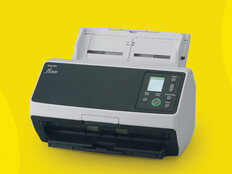More Devices Lead to More Device Shrinkage
Repairing and replacing devices continue to be major challenges for one-to-one device programs across the country. When schools returned to in-person learning, administrators quickly realized how many take-home devices had been damaged or lost. It’s not uncommon for schools to allocate millions of dollars to replacing laptops and other devices.
Implementing effective device oversight is the best first step for addressing this type of shrinkage. Advances in inventory management and innovative monitoring solutions help IT teams keep tabs on each device. Additionally, real-time updates can prompt schools to undertake maintenance and repairs proactively so that products can stay in use.
Districts should also look for asset management tools with mobile device management integrations such as Google Admin console. These MDM integrations can help establish IT as a central hub for device management, which is crucial when districts use, on average, 2,500 ed tech tools. With a one-stop hub, IT staff can proactively identify devices that might be missing but haven’t yet been reported as such.
In addition, troubleshooting can be accomplished more quickly and efficiently with a centralized hub. In-school IT teams can address simple technical issues, from malfunctioning projectors to jammed keyboard keys, helping to keep items in the hands of teachers and students.
READ MORE: Keep one-to-one device repair costs within budget.
The most transformative solution, however, is a long-term commitment to instilling a culture of stewardship throughout each school. When students and staff take greater responsibility for their technology, they become good stewards of their devices. With a culture of proactive device upkeep embedded across schools and districts, waste and carelessness can be discouraged to diminish shrinkage.
Best Practices for Inventory Management and Device Stewardship
K–12 IT leaders and teams can incorporate a number of specific strategies for addressing device shrinkage:
- Keep a detailed history of every district device. Record purchase information, funding source and hardware specs. Add custom fields to note additional information that your district requires.
- Generate custom analytic reports using a variety of filters and data points. Create reports based on location, model, repairs needed and more. This gives IT teams visibility into all devices across their district to see which devices are broken, what type of devices are breaking more often and where.
- Provide access to a simple, fully customizable ticketing process. A widely accessible help desk and customizable ticketing processes can help districts maintain and repair broken devices to avoid device shrinkage.
- Focus on building communication, collaboration and visibility for greater device stewardship. Enhanced transparency can support a greater sense of responsibility for classroom technology. Teachers and parents should work as a team to encourage stewardship, focusing on prevention rather than punishment.
- Lead by example. Everyone is responsible for creating a strong culture of device stewardship. However, one of the quickest ways to invest in this culture is to promote it as a priority for all leaders and IT team members.
The right partnerships help school leaders achieve these best practices. Cultivating best-in-class partnerships allows IT teams to better manage device rollouts and minimize shrinkage throughout the year.
Looking ahead, IT leaders in the K–12 space are rightly concerned about device shrinkage. With the number of devices soaring, having the right management tools and support in place will become ever more vital to delivering the technology that powers classrooms.
GET THE INFOGRAPHIC: What do you need to manage the device lifecycle?











